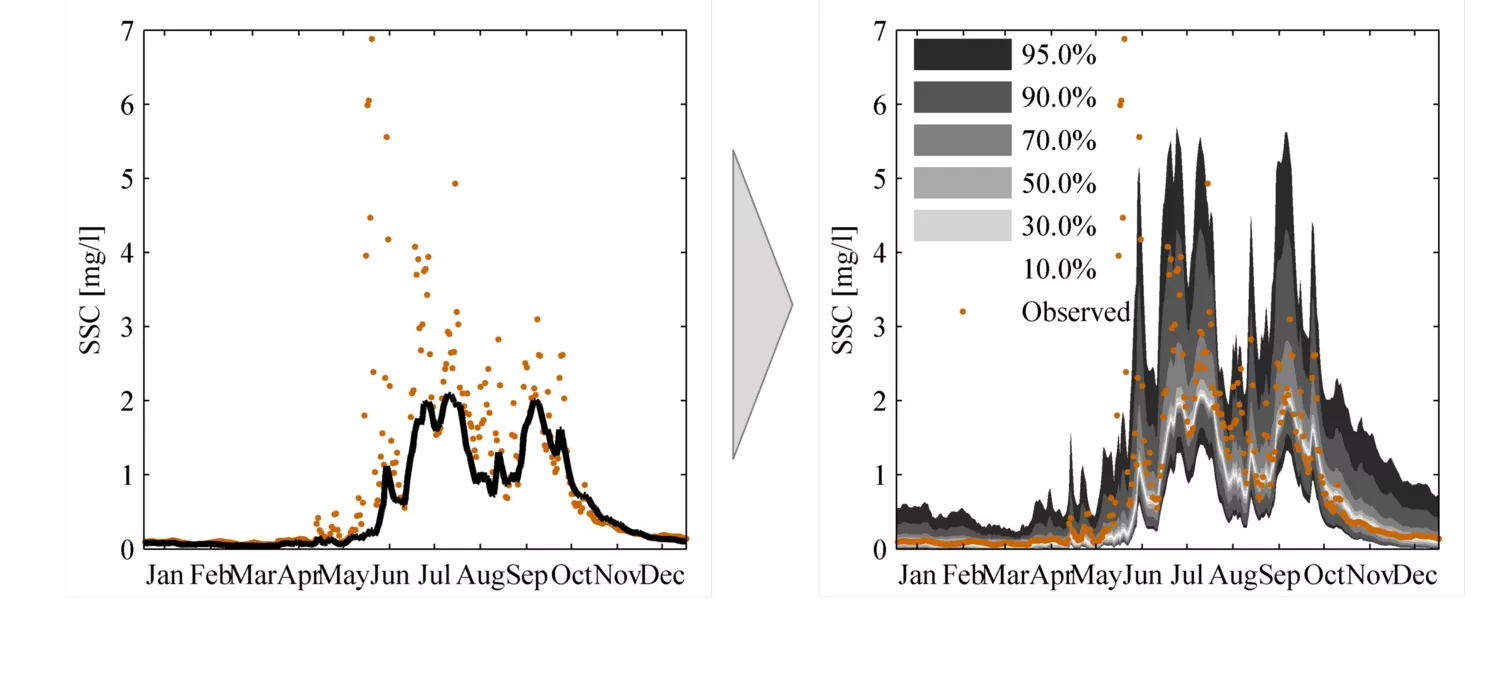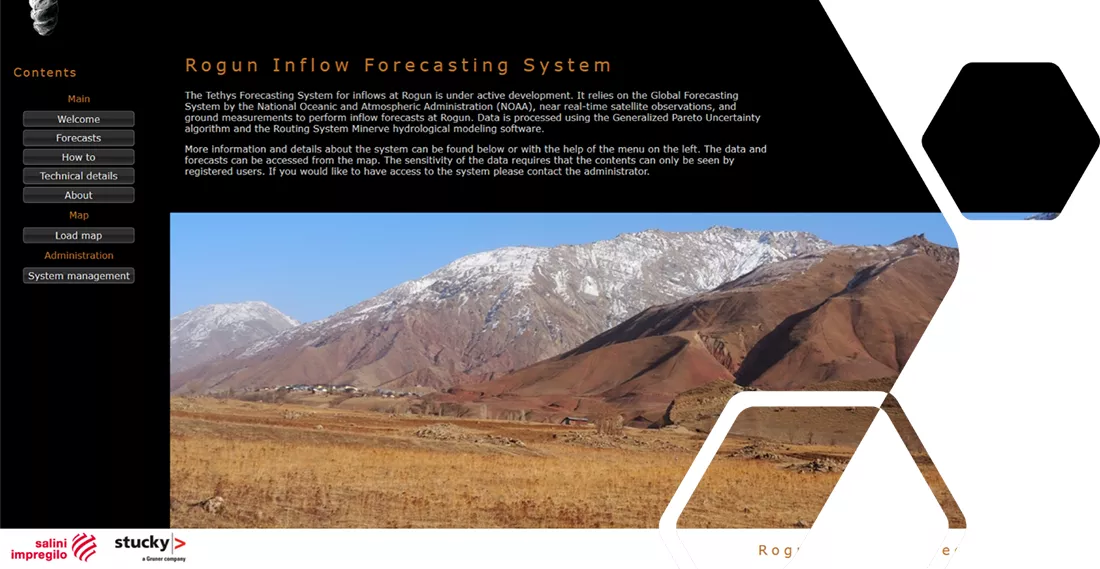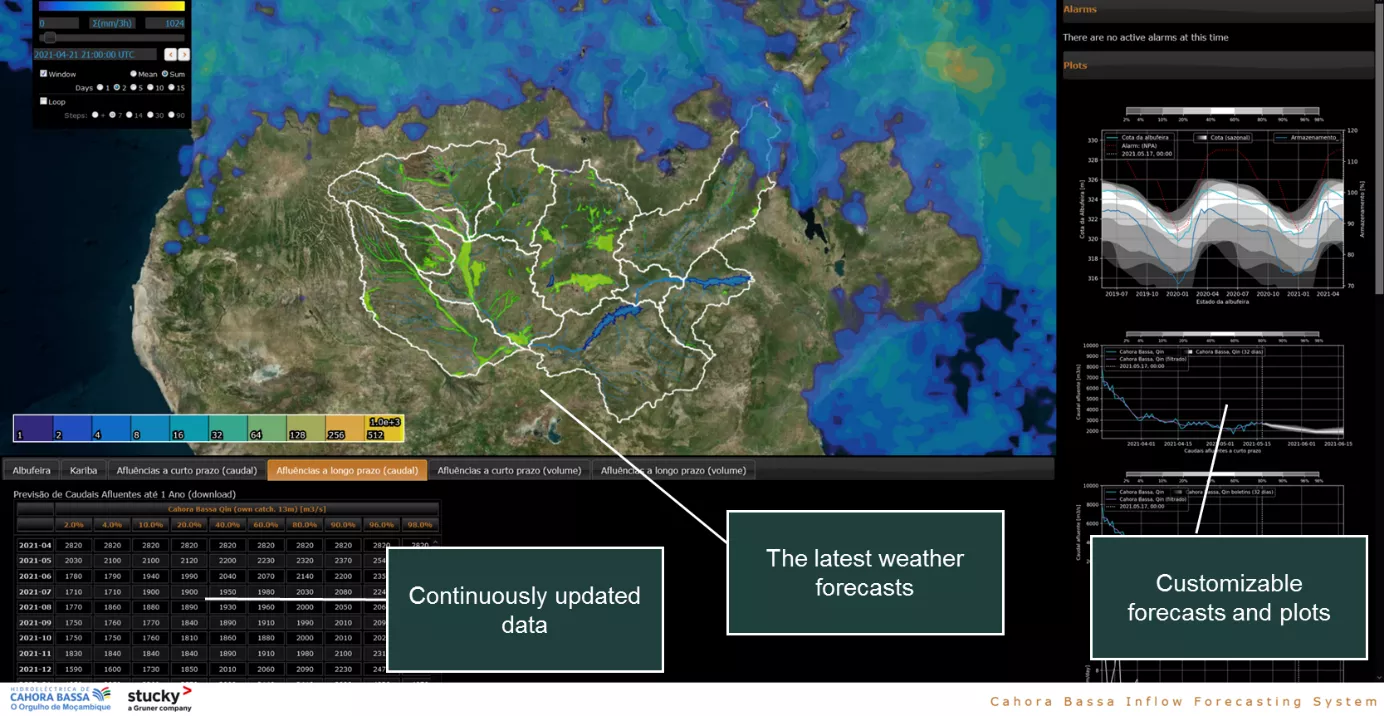Tethys - the state-of-the-art probabilistic inflow prediction system
At Gruner, we work with the Tethys hydrological forecast system. The system relies on the National Oceanic and Atmospheric Administration's (NOAA) Global Forecasting System. The system provides near real-time satellite observations and ground measurements to make inflow forecasts for the selected reservoir.
What can this system do?
Water is one of our most precious resources. In some parts of the world, it is even a scarce resource, so basic needs can be better met if better flow prediction techniques are used. The system can and should be used continuously to provide potential gains in power generation, for example. In addition, it is most useful during extreme events, which by definition are rare. Further, in the case of floods as well as droughts, it should provide sound information that can be acted upon. The benefits of inflow forecasting systems are therefore often considered too late, after the event has passed and damage has been done. The time until the next extreme event (usually, but not always, long) allows what has happened to be forgotten again.
What's new about Tethys?
Using a data-driven approach and machine learning models, the system is able to produce reliable probabilistic forecasts. The term "probabilistic" means that the forecasts of future or accumulated discharges have the highest probability of occurring, but a minimal risk of error cannot be excluded. The data are processed using the generalized Pareto uncertainty algorithm and RS Minerve hydrologic modeling software.
Why should I choose Tethys?
Typical forecasting methods are expensive to set up, complex to prepare and maintain, or simply not reliable. Tethys is a powerful and practical method for efficiently and effectively producing reliable hydrologic forecasts. Tethys is non-parametric, meaning that it can be used to predict not only inflows, but many other variables.
More information
The Tethys prediction system was originally developed by José Pedro Matos, PhD, for his dissertation at the École Polytechnique Fédérale de Lausanne as part of the African Dams (ADAPT) research project. The initial development was funded by the Swiss Competence Center Environment and Sustainability (CCES) and EPFL. The current version of the forecasting system has been further developed at Gruner with the main objective of providing operational inflow forecasts.
For more information, see the Tethys application example for forecasting suspended sediment concentrations in the Yangtze River or the PhD thesis by Dr. Matos.
The above article was written based on and quoted directly from the work of Dr. Matos.




